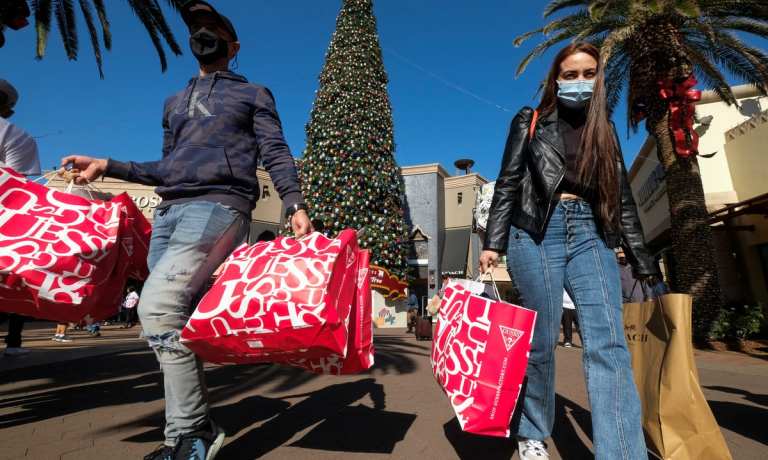
The verdict on the holiday shopping season has been delivered.
According to Mastercard’s SpendingPulse transactional analysis, total retail spending for 2020’s 75 days of Christmas was up 3 percent, and eCommerce sales were up 49 percent — good for the stay-at-home economy and tough sledding for department stores.
The story behind the numbers shows the retail industry in a state of reinvention as it looks to make sense of 2020 and plan for 2021.
For Mastercard, the story behind the numbers is told by special adviser Steve Sadove. He came from the brand marketing side of the house at Clairol to the retail side and became CEO of Saks Fifth Avenue from 2006 to 2013. He has had a front row seat to the retail revolution as it evolved from digital-optional to digital-first. In his current role, his overall take is that the resilient consumer drove what he termed a “healthy” holiday spending increase.
“This is a very healthy consumer environment in a tough situation in terms of the pandemic,” Sadove told PYMNTS CEO Karen Webster. “There was a lot of uncertainty. But in some ways, when you peel back the numbers at 100,000 feet, it’s better than anyone thought it would be.”
That uncertainty Sadove mentioned led to some significant findings in Mastercard’s holiday spending report and changes in several retail categories. For example, home furniture and furnishings experienced the strongest growth of any sector compared to 2019, up 16.2 percent overall and 31 percent online. Sadove said he attributes that growth to the flight from the city to the suburbs as well as to the stay-at-home economy that has domesticated workers and families since the pandemic took hold.
Sadove said he believes luxury is taken at too broad a definition to be pigeonholed into a successful or unsuccessful retail category. Mid-priced luxury might not have had a good holiday season. But his network contacts in the retail business tell him that high-end luxury performed better than expected.
Sadove is candid about the fact that there were winners and losers during the pandemic. The digital-first economy was the obvious winner, and he credited retail technology as one of the reasons for the 49 percent spike in holiday eCommerce.
“‘Omnichannel’ is overused, but it describes a customer journey, which can come from anywhere,” he said. “Most consumers start with their phone, and then it goes wherever they want to go. And the real trick of this season is the seamless commerce or integrated commerce in terms of buy online pickup in store, online pickup, curbside, contactless, touchless — all of those things. It’s the technology investments that companies have made that have allowed them to do well during the holidays. And a lot of the big box retailers have also invested in the technology to allow them to create a seamless integrated experience.”
Unfortunately, one of the losers in holiday 2020 comes from Sadove’s old stomping grounds: department stores. The SpendingPulse report showed the category down 10.2 percent in overall sales, and only up 3.3 percent online. The way Sadove said he sees it, department stores suffered from the pandemic. Malls, he said, were perceived as unsafe by consumers.
The category also cast its lot with apparel, and that category was off 19.1 percent. Because department stores depend on apparel sales, the combination was hard for department stores to overcome. The spate of bankruptcies also worked against the category, but Sadove cautioned against putting every department store in the same bucket.
“There will be survivors within the department stores,” he said. “The real issue is they’ve got to create an experience and differentiated product. … And now, because everything is ubiquitous in terms of online, it’s awful hard to compete. So, they’ve got to come to a different model to do it. Not easy to do, and it hasn’t been done.”
Sadove also expressed concern about the small- to medium-sized business (SMB) category. He noted that early in the pandemic, consumers expressed an interest in shopping local, which didn’t translate to the holiday. The reality was that consumers shopped bigger retailers because they had a more complete digital experience. The future for the category, he said, is in using analytics, embracing social responsibility and projecting the value set that will attract younger consumers.
“You must have the analytics and understanding of the consumer at a one-to-one level,” he said. “You’ve got to have the motivated employee who is the face of your brand, to the customer, all of them. And what makes retail so hard is that it’s detailed. It’s not like before I was in retail when I was in the consumer-packaged goods space. It’s not like creating that kind of brand. It’s not like you have the detail of every store and every associate, then you can come up with a good idea, you market it well, and you have a great brand. This is very different.”